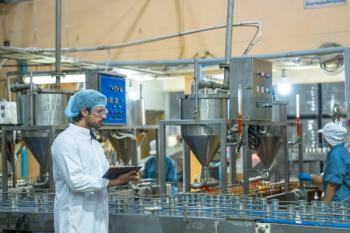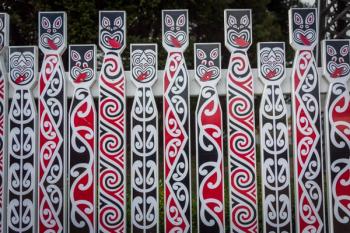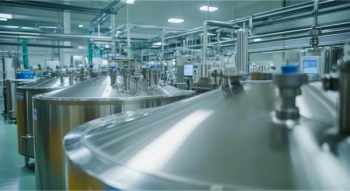
New UV–Visible Spectroscopy Method Harnesses Machine Learning to Detect Contamination in Microalgae Cultures
Key Takeaways
- UV–visible spectroscopy with machine learning offers a fast, automated method for detecting contamination in microalgae cultures, improving upon traditional labor-intensive techniques.
- The method leverages microalgae's natural pigment chemistry, providing distinct spectral fingerprints for real-time contamination detection.
A recent study demonstrated that UV–visible (UV-vis) spectroscopy combined with machine learning (ML) can provide a fast, cost-effective, and automated method for detecting biological contamination in microalgae cultures.
A recent study demonstrated that UV–visible (UV-vis) spectroscopy combined with machine learning (ML) can provide a fast, cost-effective, and automated method for detecting biological contamination in microalgae cultures. This study, which was published in the journal Spectrochimica Acta Part A: Molecular and Biomolecular Spectroscopy, was led by by Eduardo Maia Paiva at the VTT Technical Research Centre of Finland, and it details how this novel method improves upon traditional methods for detecting biological contamination in microalgae (1).
Microalgae cultivation normally is comprised of five stages: the isolation of strains stage; the cultivation stage; the growth stage; the harvesting stage; and finally, the formulation stage (2). This process is important in various industries from feed production to pharmaceuticals and biofuels. However, because of the number of steps involved, numerous challenges and complications can emerge. For example, contamination by microorganisms such as flagellates and rotifers threatens the stability and viability of these cultures, often resulting in devastating losses (1). Traditional detection techniques, such as microscopy and cytometry, are both labor-intensive and dependent on expert interpretation, slowing response times and limiting scalability (1).
In their study, the researchers demonstrated that UV-vis spectroscopy can be a potential solution to these challenges. Although spectroscopy has been used for this purpose in the past, research has found that techniques like Raman and Fourier transform infrared (FT-IR) spectroscopy struggle to analyze live microalgae in aqueous environments or require sampling strategies that are time-consuming (1). Raman spectroscopy struggles with monitoring large-scale microalgae cultures because of its limited sampling volume (1). Meanwhile, FT-IR spectroscopy is unsuitable for in-vivo monitoring in aqueous media because water strongly absorbs infrared light (1).
On the other hand, UV–vis spectroscopy benefits from the natural pigment chemistry of microalgae (1). This chemistry produces distinct spectral fingerprints that can be exploited for real-time, automated contamination detection (1).
The researchers explained in their study that the UV-vis spectra is good at picking up chlorophylls, carotenoids, and lipids, which allows researchers to use ML to identify even subtle contaminations in complex cultures (1).
As part of their experimental procedure, the researchers put together a setup that contained UV–visible light source that covered wavelengths from 200 to 1000 nm, a 10-mm cuvette holder, and a handheld spectrometer for data collection. By comparing uncontaminated and contaminated cultures, they successfully distinguished between the microalgae Tetradesmus obliquus, the flagellate Poterioochromonas malhamensis, and the rotifer Brachionus plicatilis within bulk Chlorella vulgaris solutions (1).
The researchers found that their approach was sensitive enough to detect contamination even under challenging conditions. For example, one of these conditions is when salt-stressed media was the habitat used to grow the microalgae cultures (1). Salt stress alters pigment balance, and what this results in is spectral changes that could obscure detection (1). However, through the use of principal component analysis (PCA), the researchers discovered that they could classify these spectral differences with accuracy (1).
There are important implications from this study. For one, the study offers a pathway for reducing the need for manual sample analysis. By automating contamination detection, scientists would be able to save both labor costs and time (1). In addition, the technology’s compatibility with in-line monitoring and camera-based imaging offers exciting potential for scalable, real-world deployment (1).
By leveraging the synergy of spectroscopy and artificial intelligence, the study demonstrates how chemical and biological signals embedded in spectral data can be decoded into actionable information. The result is a streamlined, cost-effective system for maintaining microalgae culture integrity (1).
The findings mark a significant step forward in the application of light-based spectroscopic techniques to biological monitoring. As industries increasingly turn to microalgae for sustainable solutions, ensuring culture stability will be vital, and this research provides a promising tool for achieving that goal (1).
References
- Paiva, E. M.; Hyttinen, E.; Donsberg, T.; Barth, D. Biological Contaminants Analysis in Microalgae Culture by UV–vis Spectroscopy and Machine Learning. Spectrochimica Acta Part A: Mol. Biomol. Spectrosc. 2025, 330, 125690. DOI:
10.1016/j.saa.2024.125690 - Kowthaman, C. N.; Senthil Kumar, P.; Selvan, V. A. M.; Ganesh, D. A Comprehensive Insight from Microalgae Production Process to Characterization of Biofuel for the Sustainable Energy. Fuel 2022, 310, 122320. DOI:
10.1016/j.fuel.2021.122320 .
Newsletter
Get essential updates on the latest spectroscopy technologies, regulatory standards, and best practices—subscribe today to Spectroscopy.





